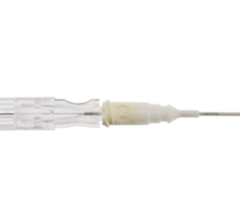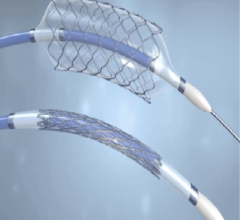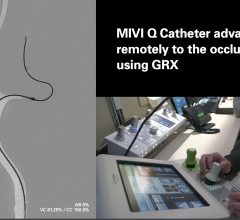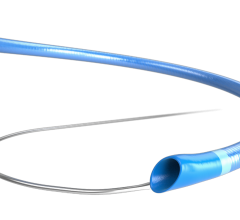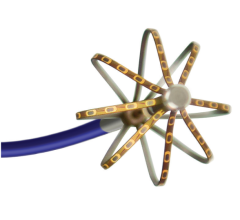
The Benephit CV Infusion System features two identical branches to allow the infusion of therapeutic agents into both renal arteries simultaneously.
Targeted Renal Therapy (TRT) with the Benephit CV Infusion System from FlowMedica Inc. is an alternative to systemic intravenous (IV) infusion of medications to address kidney dysfunction related to a number of conditions. TRT is a novel technology that enables the infusion of medications and other therapeutic agents directly into the kidneys via the renal arteries.
Systemic IV infusion is associated with hypotension and other adverse effects and may often fail to deliver therapeutic levels of medications to the kidneys. TRT, however, delivers dosages directly to the kidneys, where they are quickly excreted, thus reducing the amount of medication in circulation. The technique can maximize the efficacy of therapeutic agents while minimizing the serious side effects associated with IV administration.
Here we report our experience with TRT in a patient at high risk for contrast-induced nephropathy (CIN) and established cardiorenal syndrome (CS). CIN occurs in patients whose kidneys cannot withstand the harmful effects of radiocontrast media. CS — renal dysfunction characterized by excess fluid accumulation — occurs in a large percentage of patients hospitalized with heart failure.
The patient was a 62-year-old woman with a preoperative diagnosis of hypertensive heart disease, congestive heart failure, significant fluid overload and diastolic left ventricular (LV) failure, mild to moderate pulmonary hypertension, hyperlipidemia and chronic kidney disease. She also had a history of diabetes and a previous intervention to the left circumflex obtuse marginal, diagonal branch.
She was admitted for planned cardiac catheterization with possible intervention secondary to angina and a recent abnormal SPECT test. Preprocedure medication included PO mucomyst and IV sodium bicarb.
The patient was evaluated with left heart catheterization, selective coronary and LV cineangiography and intracoronary ultrasound of the left anterior descending artery. A significant (75 to 80 percent) calcified stenosis of the left anterior descending artery was identified.
Because of the patient's kidney disease, the Benephit CV bifurcated catheter system was used. The device was inserted through the right common femoral artery using an 8F Benephit sheath system. Both renal arteries were cannulated in less than two minutes. The coronary stenosis was successfully treated with rotoablation and stenting using a 6F guide advanced through the Benephit sheath using a modified Seldinger technique. Intrarenal fenoldopam at a dose of 0.02 mcg/kg/min was infused to increase renal blood flow and prevent acute renal failure post-procedure. The patient received a total of 50mL diatrizoate sodium and 325mL iodixianol as contrast media during the combined diagnostic and interventional procedure.
No hypotension or other adverse effect resulted from continuous intrarenal fenoldopam infusion during the procedure. To address the established cardiorenal syndrome in this heart failure patient, fenoldopam also was infused for approximately seven hours post-procedure, followed by TRT with nesiritide administered continuously for 14 hours at a dose of 0.01 mcg/kg/min after a bolus of 2 mcg/kg. Serum creatinine (Cr) was 2.4 mg/dL at baseline (preprocedure) and decreased to 2.0 mg/dL on post-procedure Day 3.
Despite this patient's high risk for contrast-induced renal failure and heart failure symptoms, there was no compromise of renal function, no increase in length of stay and no requirement for post-procedural dialysis after a combined diagnostic and interventional cardiovascular procedure utilizing contrast media. TRT in this patient was associated with successful renal protection. Additional studies are needed to further assess the role of this novel and promising technology in preventing kidney dysfunction.


 October 28, 2025
October 28, 2025 



